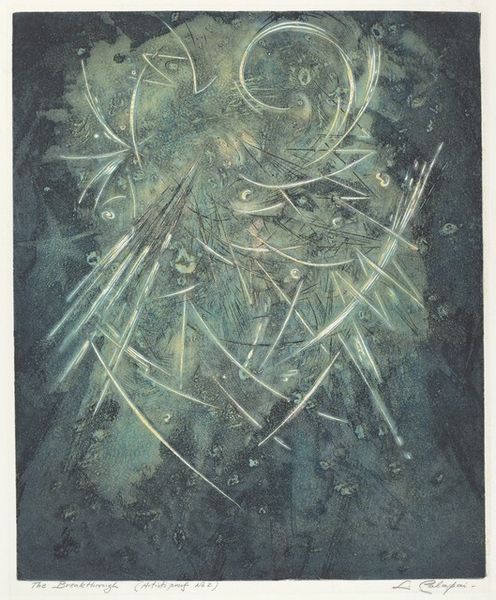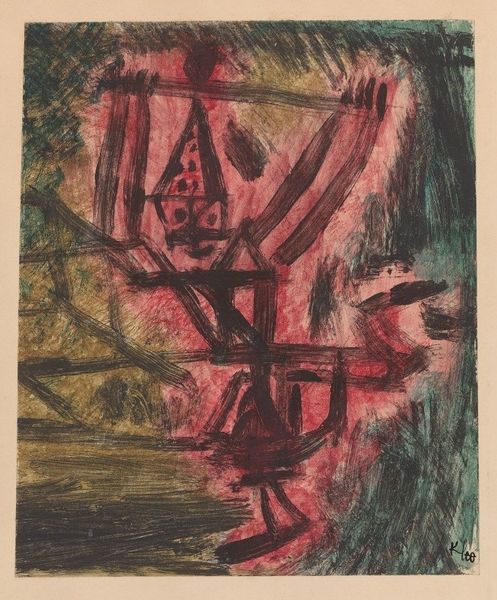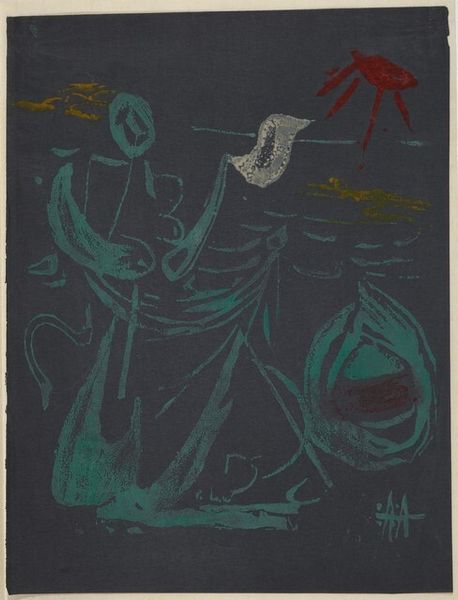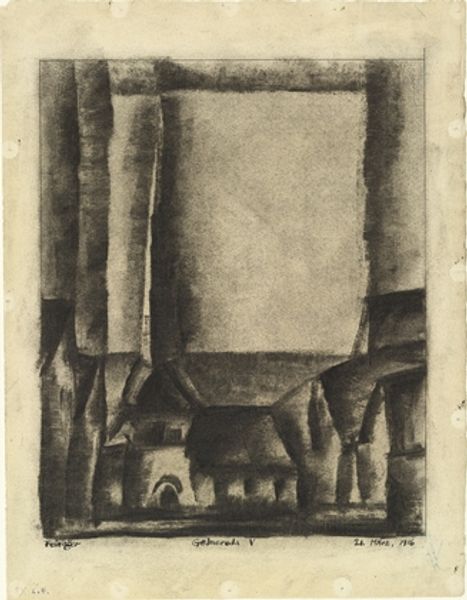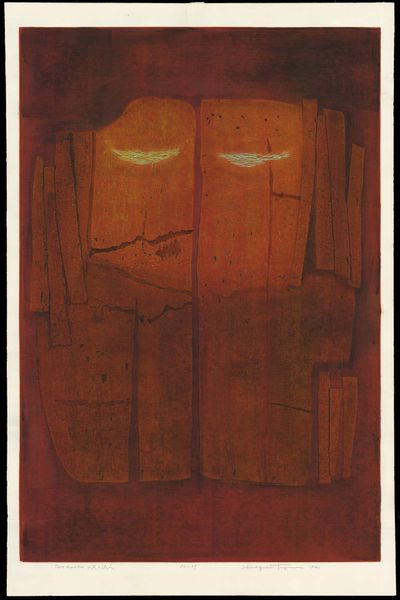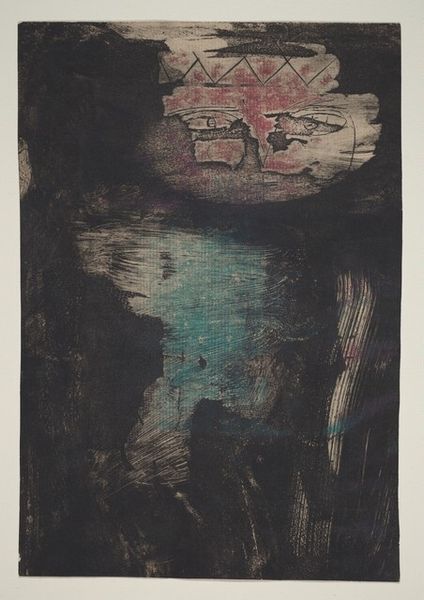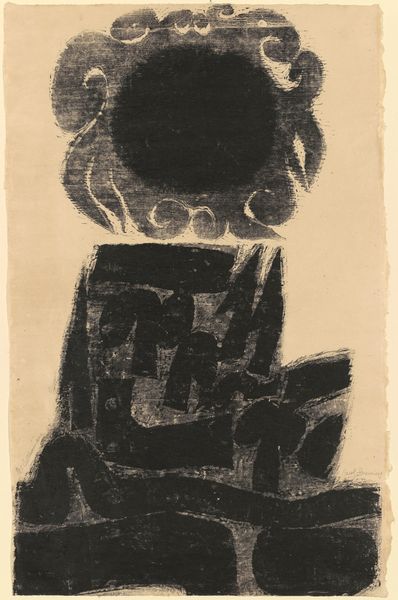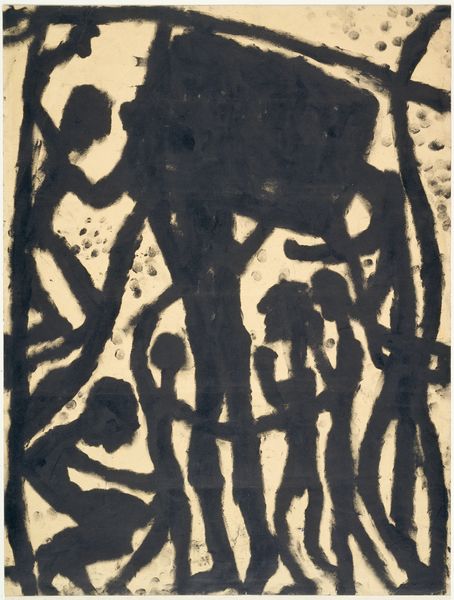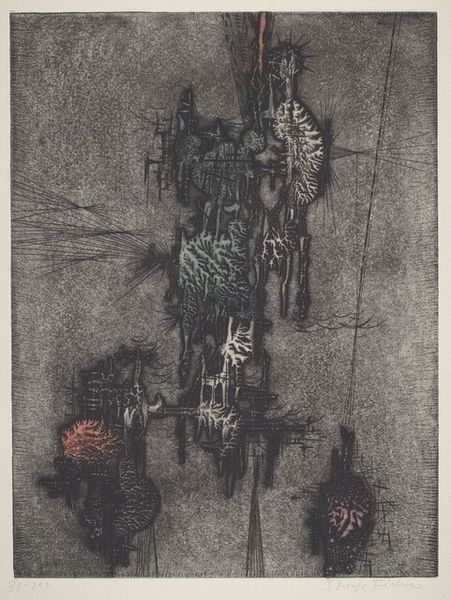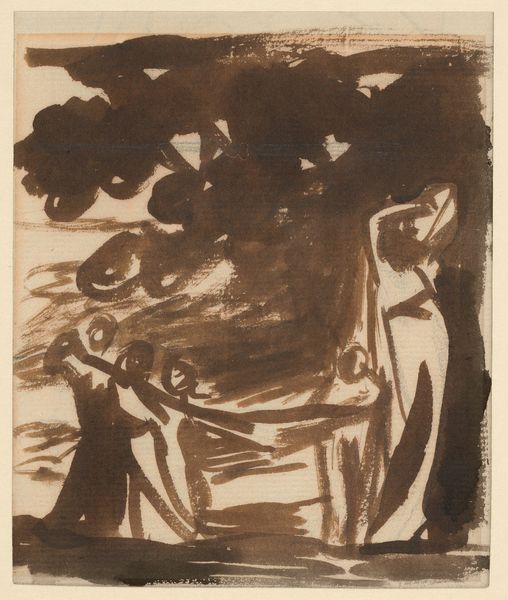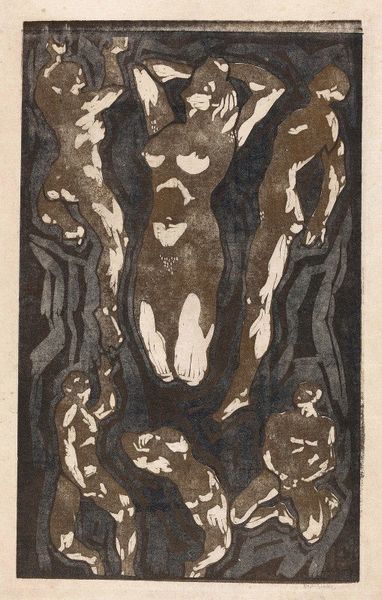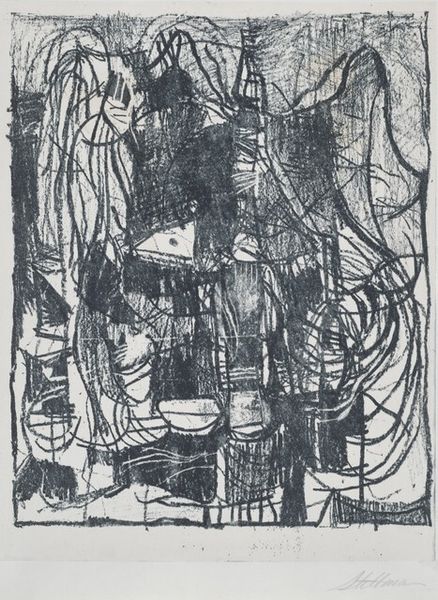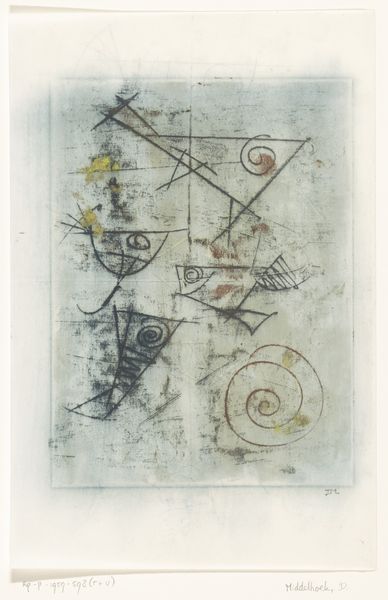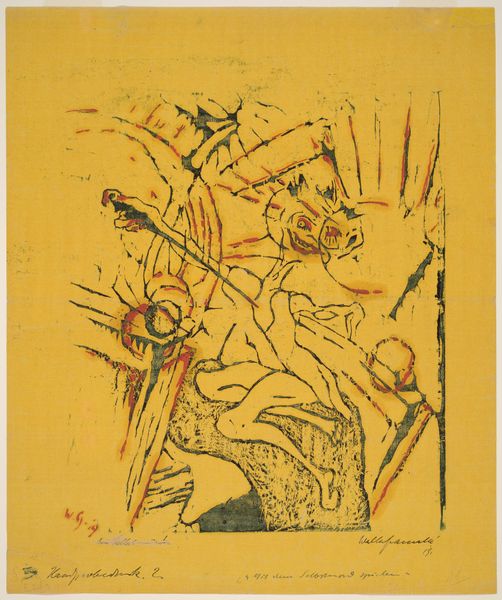
Dimensions: image: 352 x 279 mm
Copyright: © Geoffrey Clarke | CC-BY-NC-ND 4.0 DEED, Photo: Tate
Curator: Geoffrey Clarke's "Woman and Child" presents us with a world of abstracted forms, rendered in moody, earthy tones. What are your first impressions? Editor: It strikes me as a ritual object, a stylized totem. The symbols layered upon each other, almost like garments, hinting at both protection and perhaps constraint. Curator: Clarke, born in 1924, often worked with industrial materials. Though the medium here is printmaking, you still sense that constructive, almost brutal quality. It's intriguing. Editor: Absolutely. The recurring motif of the circle, topped with spike-like elements, reads as a crown or halo, but also as a fence. It’s a powerful visual paradox. Curator: Yes, the implied violence is palpable. It's a compelling piece, leaving me with more questions than answers. Editor: Me too. It's like glimpsing a forgotten language where the known and unknown intertwine.
Comments
Join the conversation
Join millions of artists and users on Artera today and experience the ultimate creative platform.
tate 8 months ago
⋮
Clarke started to make sugar-lift aquatints in 1948. This technique involves masking areas of the etching plate with a solution of sugar and ink. It allows the artist to reproduce the marks of brush or pen and appealed to Clarke because it was spontaneous. The theme of woman and child or mother and child was one that he often returned to at that time. In 1951 he wrote, 'There are numerous forms for man, woman and child. They are various, though basically the same, because it is the artist's function to suggest, to imply, to reveal in as many ways as he can'. This theme, developed first in his prints, was also applied to his sculpture. Gallery label, September 2004
